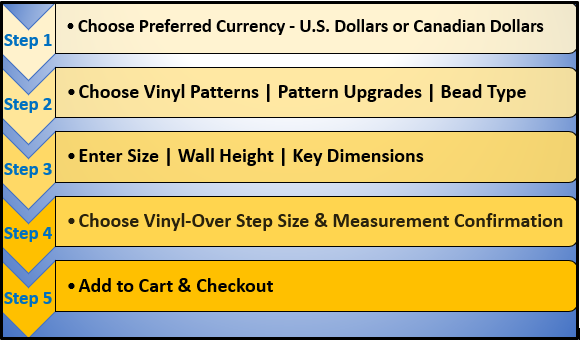Frequently Asked Questions & Answers
General Information
Q: Can I do a pool liner or pool cover replacement and installation?
A: If this is your first liner or pool cover installation there are a couple of things to take into consideration:
-
- Are you physically fit enough to take on the project? Liners and covers typically weigh anywhere from 50 to 225 lbs. You will need some help to maneuver the replacement pool liner into place and this is a difficult project for one person.
- The installation will span a day or two, so you will need to set aside the time.
- Can you take accurate measurements?
- If you can do these things and can follow instructions with some support from Pool Fits the answer is yes, absolutely: You got this!
- The reward is the satisfaction and pride of accomplishment you’ll feel when you see how beautiful the pool looks.
Q: What kind of liner do I need?
A: It depends on what type of pool you have:
-
- Aboveground Liner Patterns are typically Round or Oval shapes and typically installed fully above grade.
- Onground Pool Liners are typically Rectangle, Octagon or Grecian / Emerald Shapes and installed completely above grade or partially below grade.
- Inground Pool Liners come in many, many shapes and are typically installed fully below grade.
- Pool Fits can help you identify what type of pool you have and what type of liner you need.
Q: When is the best time to install my pool liner?
A: The best conditions for vinyl pool liner is installation are as follows:
-
- Sunny day.
- Moderate temperatures of between 70F/20C 85F/30C.
- The sunlight and the air temperature help the vinyl to shape easily to the pool bottom.
Q: What is the difference between gauge and mil?
A: They are both references to the thickness of the vinyl material use in manufacturing a pool liner:
-
- Gauge is a ‘nominal’ measure with no technical definition or meaning and can be a misleading reference as to the vinyl material thickness of a pool liner.
- Mil means thousands (000’s) of an inch and is a very accurate measure of the thickness of the vinyl material thickness of a pool liner.
Q: What is liner bead track or bead receiver?
A: The slot in the pool coping where the liner bead is inserted to hold the vinyl pool liner in place around the perimeter of the pool.
Q: Why is my pool losing water? Is my pool leaking?
A: There are several of reasons why a pool can be losing water and not all of them mean the pool is leaking. If you have this condition, it is probably why you are considering replacing your vinyl pool liner. Call Pool Fits and talk to a Pro, we can walk you through the process to determine why your pool is losing water!
Q: How long does it take until I receive my liner?
A: It depends on the type of pool liner. Refer to the Pool Fits ‘Service Charter’ located on this site within the Business Center.
Q: Is it difficult to measure a pool liner and how accurate do the measurements have to be?
A: You got this! Pool Fits has the very best resources within our Knowledge Center:
Best of all you’ve got us . . . if you have a question, we’re here to help!
Q: Is thicker pool liner material better?
A: It depends on the type of pool that you have and the application. Browse our site or Talk to a Pool Fits Pro and we will walk you through the best choice for your replacement pool liner project.

